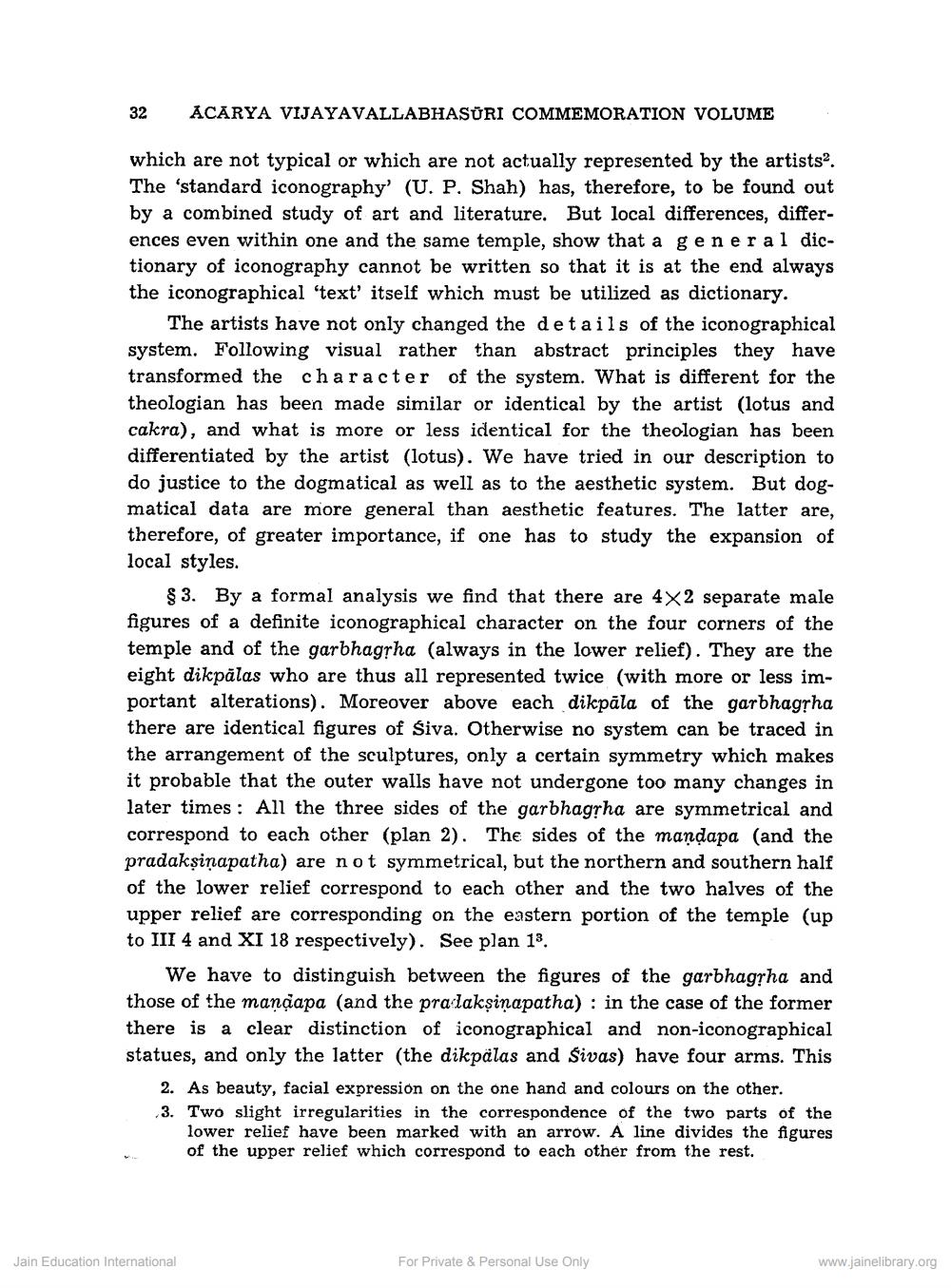________________
32
ACARYA VIJAYAVALLABHASŪRI COMMEMORATION VOLUME
which are not typical or which are not actually represented by the artists. The 'standard iconography' (U. P. Shah) has, therefore, to be found out by a combined study of art and literature. But local differences, differences even within one and the same temple, show that a general dictionary of iconography cannot be written so that it is at the end always the iconographical 'text' itself which must be utilized as dictionary.
The artists have not only changed the details of the iconographical system. Following visual rather than abstract principles they have transformed the character of the system. What is different for the theologian has been made similar or identical by the artist (lotus and cakra), and what is more or less identical for the theologian has been differentiated by the artist (lotus). We have tried in our description to do justice to the dogmatical as well as to the aesthetic system. But dogmatical data are more general than aesthetic features. The latter are, therefore, of greater importance, if one has to study the expansion of local styles.
83. By a formal analysis we find that there are 4x2 separate male figures of a definite iconographical character on the four corners of the temple and of the garbhagȚha (always in the lower relief). They are the eight dikpälas who are thus all represented twice (with more or less important alterations). Moreover above each dikpäla of the garbhagpha there are identical figures of Siva. Otherwise no system can be traced in the arrangement of the sculptures, only a certain symmetry which makes it probable that the outer walls have not undergone too many changes in later times: All the three sides of the garbhagyha are symmetrical and correspond to each other (plan 2). The sides of the mandapa (and the pradakşiņapatha) are not symmetrical, but the northern and southern half of the lower relief correspond to each other and the two halves of the upper relief are corresponding on the eastern portion of the temple (up to III 4 and XI 18 respectively). See plan 13.
We have to distinguish between the figures of the garbhagļha and those of the manaapa (and the pra lakṣinapatha) : in the case of the former there is a clear distinction of iconographical and non-iconographical statues, and only the latter (the dikpälas and Sivas) have four arms. This
2. As beauty, facial expression on the one hand and colours on the other. 3. Two slight irregularities in the correspondence of the two parts of the
lower relief have been marked with an arrow. A line divides the figures of the upper relief which correspond to each other from the rest.
Jain Education International
For Private & Personal Use Only
www.jainelibrary.org




